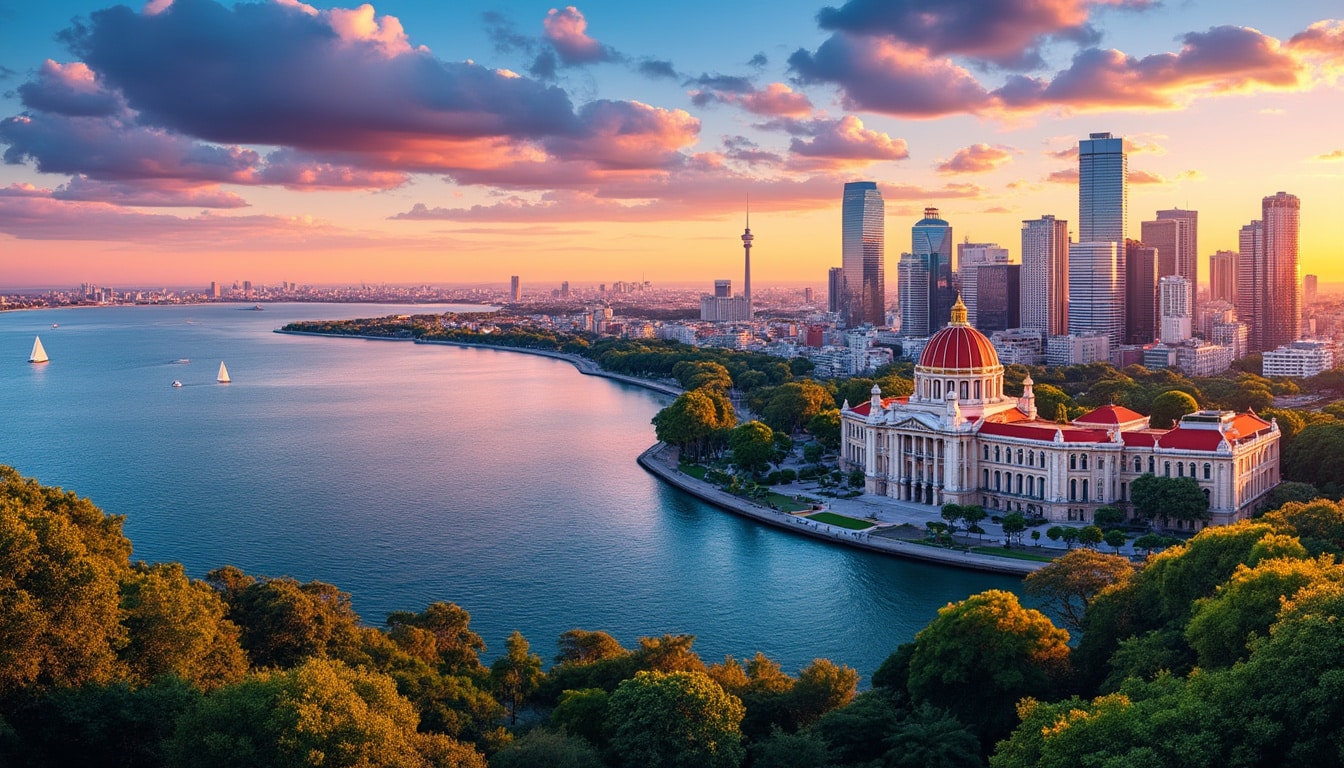Buenos Aires, often regarded as the “Paris of South America,” is a city that harmoniously blends natural beauty with cultural richness. Nestled along the Río de la Plata, this vibrant metropolis offers a unique tapestry of geographical features that have shaped its development and identity. From the sprawling pampas to the bustling neighborhoods, Buenos Aires presents an intriguing interplay of landscapes and urban life. Discover the captivating geographical essence of Buenos Aires, where the rhythm of tango meets the pulse of a dynamic city.
The Strategic Location of Buenos Aires
Buenos Aires, officially known as the Autonomous City of Buenos Aires, sits strategically on the southern bank of the Río de la Plata, one of the world’s widest rivers, acting as a natural border with Uruguay. This privileged location has historically made it a critical port and trade hub for Argentina, facilitating commerce and cultural exchanges with Europe and beyond. The city’s geographical positioning also places it within the sprawling expanse of the Pampas, a vast, fertile flatland that supports Argentina’s agricultural backbone.
The metropolis is the largest urban agglomeration in Argentina, home to over 14 million people, with nearly 3.1 million residing within the city’s official boundaries. The Buenos Aires Metropolitan Area (AMBA) further amplifies its significance, collectively forming a dense tapestry of human life and economic activity. The city’s layout is meticulously planned, with major roads like Avenida 9 de Julio ensuring smooth connectivity within this vibrant urban landscape.
The geographical features of Buenos Aires extend beyond the urban center, stretching into the lush Pampas, which are blessed with fertile plains conducive to agriculture. These plains, devoid of significant elevations, seamlessly blend into the city’s edges, reinforcing its connectivity with the surrounding agricultural regions. 🌾
The Role of the Río de la Plata
Central to Buenos Aires’ identity is the Río de la Plata, a broad estuary that has served as an economic lifeline for centuries. This river is one of the city’s defining geographical features, offering a gateway for goods and cultural influences from across the Atlantic. Its banks are a focal point of maritime activity, lined with docks and piers that facilitate the movement of bulk goods essential to Argentina’s economy. Its expansive waters provide Buenos Aires with not just trade routes but also recreational spaces along the Costanera, where locals and tourists alike can enjoy the stunning river views. 🏞️
Rainfall from the Pampas flows into the Río de la Plata, playing a crucial role in Argentina’s hydrology. This natural drainage system helps manage river levels, preventing potential overflow that might impact the city’s infrastructure. The river is more than just a physical divide; it’s a lifeline that supports Buenos Aires’ thriving ecosystem, acting as both a practical and cultural landmark. 🌐
Climate and Weather Patterns
The climate of Buenos Aires is predominantly humid subtropical, characterized by hot summers and mild winters, contributing to its appeal as a year-round tourist destination. The average annual temperature hovers around a comfortable 18°C (64°F), with sporadic rainfall throughout the year. However, the city’s topography, primarily flat plains, makes it susceptible to sporadic flooding, especially during heavy rains in its summer months. Preventive measures, including sophisticated drainage systems, have been implemented to mitigate these occurrences, ensuring the safety of its residents. 🌤️
Discover more about the weather in Buenos Aires and how its unique climate nuances impact daily life in this dynamic city.
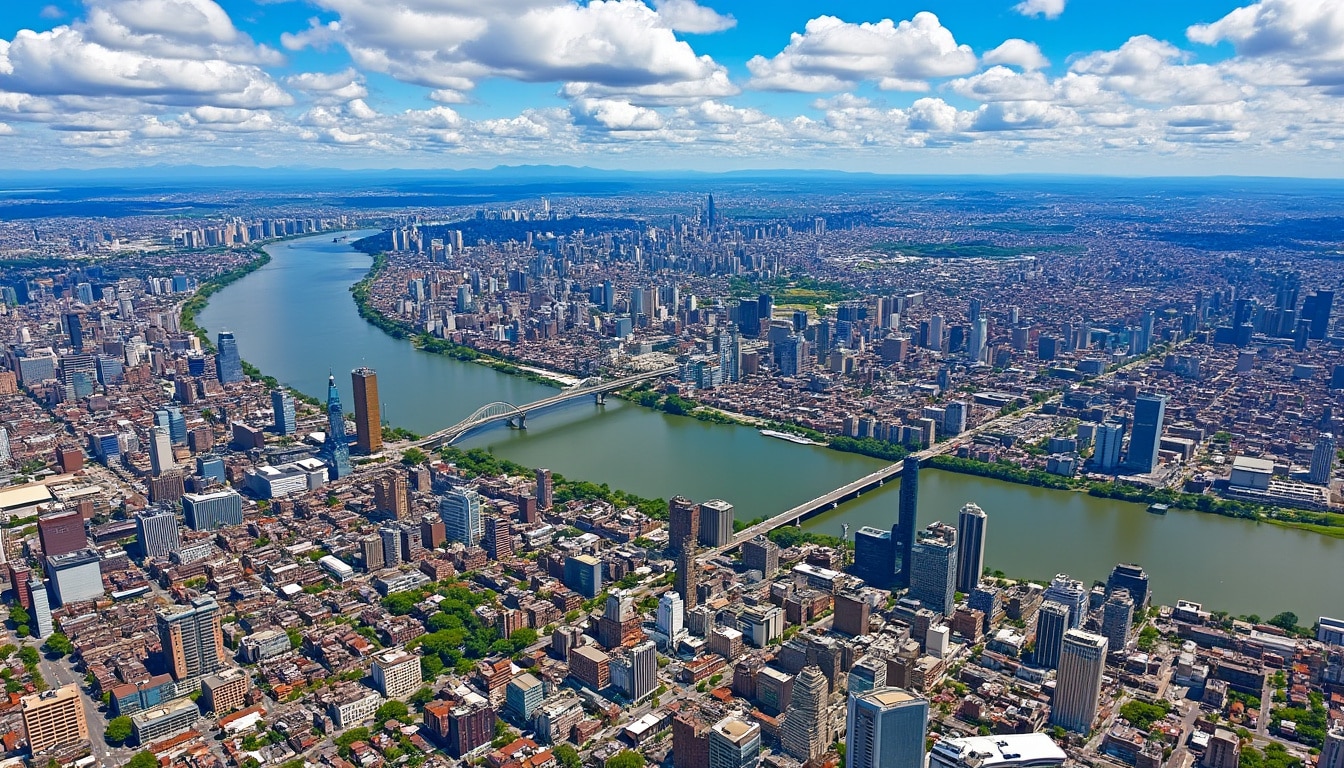
Urban Layout and Neighborhood Diversity
Buenos Aires is a city marked by its diversity, both in demographics and geographical structures. Its urban sprawl is a fascinating mosaic of neighborhoods, each offering its unique charm and characteristics, contributing to the city’s rich cultural tapestry. From the artistic vibe of San Telmo with its cobblestone streets to the modern allure of Puerto Madero, each area offers a window into the city’s soul. 🏙️
The city is divided into 15 districts or communes, further subdivided into 48 barrios or neighborhoods. Commune 13, including neighborhoods like Núñez and Belgrano, is one of the most densely populated, showcasing a blend of residential charm and urban conveniences. On the other hand, La Boca, with its iconic colorful buildings and vibrant street art, remains symbolic of Buenos Aires’ immigrant roots and artistic spirit. 🌃
The Iconic Landmarks
Among the city’s diverse neighborhoods, several landmarks stand out as must-visit locations, drawing visitors from across the globe. The Obelisco, an emblem of national pride, stands tall at Plaza de la República, serving as a focal point for celebrations and gatherings. Close proximity to Avenida 9 de Julio amplifies its significance, as this thoroughfare is renowned as one of the broadest avenues in the world.🚏
- 🌐 Explore Buenos Aires’ vibrant neighborhoods
- 🎨 Embrace the artistic vibes of San Telmo and La Boca
- 🌿 Enjoy the lush greenery of Parque Tres de Febrero
Palermo, with its extensive parks such as Parque Tres de Febrero, offers a serene escape from the bustling city life. This green oasis, dotted with lakes and botanical gardens, provides residents and tourists a chance to breathe and reconnect with nature. The diverse ecological balance highlights how peri-urban landscapes thrive in conjunction with a bustling metropolis.
Infrastructure and Civic Planning
The city’s infrastructure is a testament to meticulous planning, designed to accommodate its growing population while preserving its cultural heritage. The extension of major roads and public transportation networks like the Subte ensures that all areas of Buenos Aires remain accessible, fostering greater connectivity. Moreover, strategic urban renewal initiatives in areas like Puerto Madero have revitalized the city’s waterfront, transforming former docklands into bustling hubs of dining, entertainment, and commerce.
Discover more about Buenos Aires’ local culture and urban life, which intricately weave through its geographical and architectural landmarks.
Buenos Aires’ Natural Landscapes and Recreation
Buenos Aires, while renowned for its urban vibrancy, also cherishes its natural splendors that dot the cityscape. Parks and waterfronts such as the Costanera Norte and Sur offer idyllic settings for recreation and relaxation, cementing the city’s ongoing embrace of its natural landscapes. The blend of urban and natural settings reflects the harmonious coexistence characterizing Buenos Aires’ environs. 🌿
The generous swathes of green spaces across Buenos Aires provide essential ecological balance, serving as lungs for this populous metropolis. These parks host a variety of activities, from weekend markets to cultural events, reflecting the city’s commitment to sustaining a vibrant community life. Nature also plays a crucial role in enhancing the quality of life, offering residents respite from urban hustle. 🏞️
The Lush Parks and Gardens
The city’s commitment to preserving and celebrating its natural beauty is evident in its well-maintained parks and gardens. The lush expanses of Parque Tres de Febrero are not just a nod to the need for recreational spaces but are central to fostering a communal spirit among residents. Here, locals engage in horseback riding, picnics, and leisurely walks, defining the quintessential Buenos Aires weekend.
- 🌸 Enjoy the seasonal blooms at the Rose Garden in Palermo
- 🐦 Bird-watch at the Costanera Ecological Reserve
- 🌊 Relax along the waterfronts of Costanera Sur
The Costanera Ecological Reserve offers a unique biodiversity hub within the heart of Buenos Aires, home to various native plant species and migratory birds. This oasis, nestled against the Río de la Plata, highlights the city’s dedication to environmental conservation and sustainability, providing a natural refuge where both wildlife and city dwellers thrive in a shared ecosystem. 🌳
The Cultural Tapestry and Sports Influence
Buenos Aires is not only geographically diverse but culturally rich, with the physical landscape intertwining seamlessly with its cultural dynamics. The city is a melting pot of European influences, primarily due to the waves of immigration from Italy, Spain, and other parts of Europe during the early 20th century. This historical influx has shaped Buenos Aires’ culinary offerings, architecture, and cultural practices, creating a rich tapestry of traditions and innovations.
Dance and music, especially the sensual tango, capture the spirit of Buenos Aires, weaving through its streets and adding rhythm to daily life. The vibrant neighborhoods of Palermo and La Boca become stages for spontaneous milongas, preserving this traditional dance form and inviting global audiences to participate in its alluring cadence. 🎶
Sporting Life in Buenos Aires
Buenos Aires pulses with a dynamic sports culture, prominently featuring soccer, which stands as a unifying passion across its communities. The city boasts some of Argentina’s most prestigious soccer clubs, such as River Plate and Boca Juniors, whose stadiums are landmarks in their own right. Game days transform neighborhoods into seas of vibrant color and bustling excitement, epitomizing the city’s unyielding sports spirit. 🏟️
Other popular sports like basketball, rugby, and hockey thrive amongst the city’s residents, facilitated by world-class sporting facilities such as the National Center for High Sports Performance (CENARD) in Núñez. This center is pivotal in training elite athletes, fostering talent, and emphasizing the importance of sports in the fabric of Buenos Aires’ community life.
For a deeper dive into the dynamism of Buenos Aires’ natural features and recreational landscapes, visit here.
FAQ
- 🔎 What is the defining geographical feature of Buenos Aires?
Buenos Aires is primarily defined by its location along the Río de la Plata, contributing to its role as a crucial trade and cultural exchange hub. - 🌤️ How does the climate affect daily life in Buenos Aires?
The city’s humid subtropical climate ensures warm weather most of the year, ideal for outdoor fests and cultural activities, but it comes with challenges like occasional flooding. - 🎨 Which neighborhoods are must-visit for cultural exploration?
San Telmo and La Boca offer rich cultural experiences, with street art, tango, and historical architecture defining their character. - 🌳 What recreational spaces are popular in Buenos Aires?
Parque Tres de Febrero and the Costanera Ecological Reserve are popular for relaxation and excursions, showcasing the city’s commitment to balancing urban and natural environments. - 🏟️ How significant is soccer in Buenos Aires?
Soccer is highly significant, with clubs like River Plate and Boca Juniors playing a central role in shaping local and national culture.
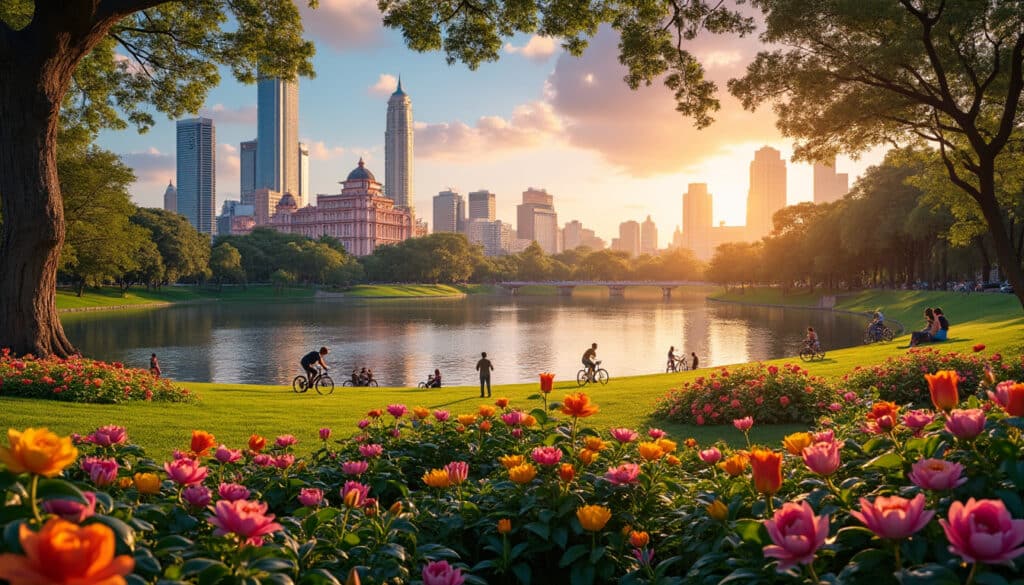
Nature and Geography of Buenos Aires
Buenos Aires, the vibrant capital of Argentina, is a city that beautifully melds urban appeal with natural beauty. Nestled on the banks of the Río de la Plata, Buenos Aires offers a unique blend of geography that plays a vital…
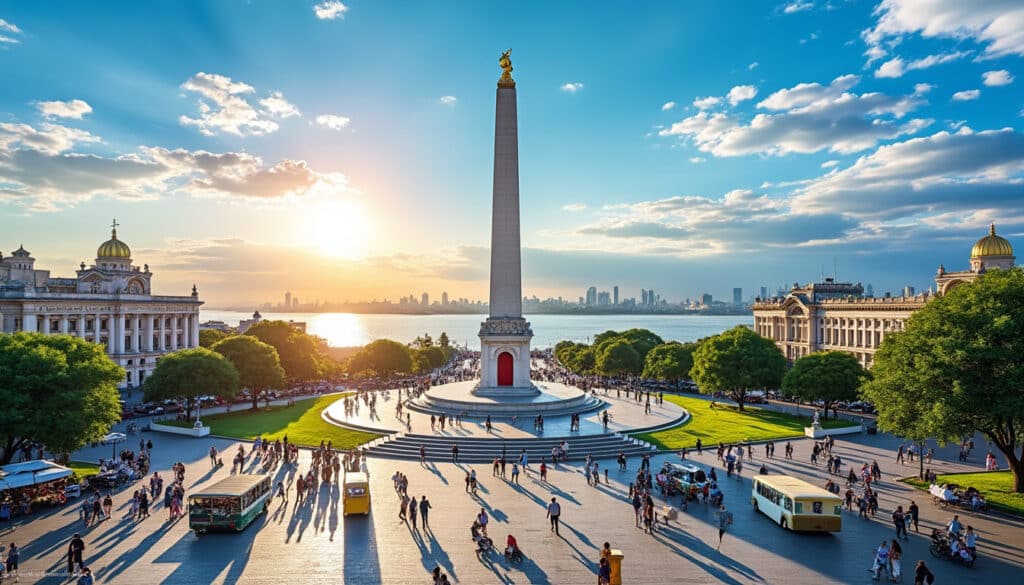
Location and coordinates of Buenos Aires
Buenos Aires, the cosmopolitan capital of Argentina, stands as a beacon of culture and history in South America. Known for its rich heritage, vibrant street life, and passionate tango scene, this sprawling city captures the hearts of locals and tourists…
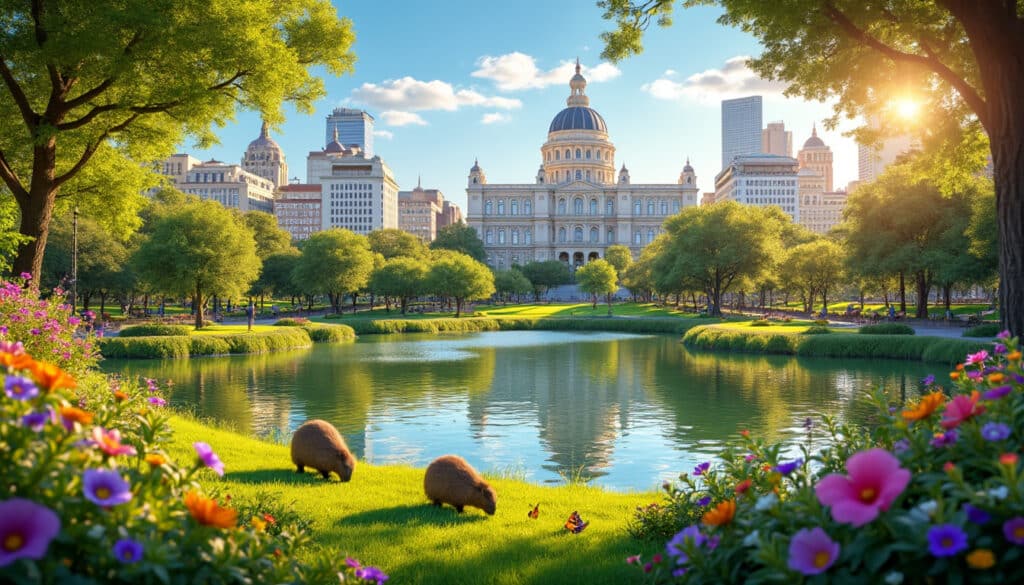
Nature and wildlife in Buenos Aires
With its reputation as a bustling metropolis rich in culture and urban life, Buenos Aires is often seen as a city teeming with tango rhythms and cosmopolitan vibrancy. However, nestled within this urban sprawl is a surprising abundance of nature…
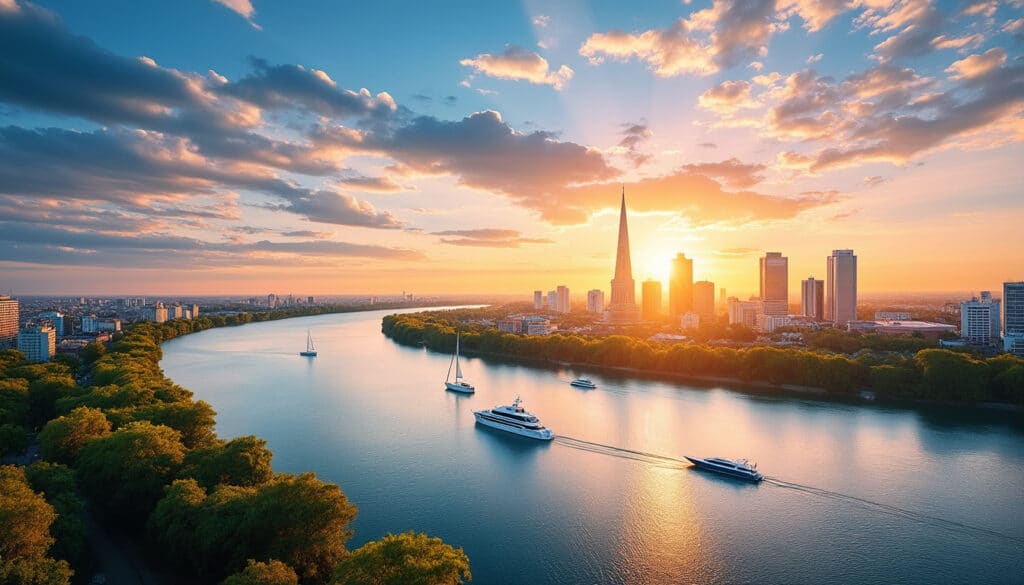
Rivers and water near Buenos Aires
Buenos Aires is a city rich with both cultural and natural wonders. Among its most intriguing features are the majestic rivers and water bodies that surround it. They play a crucial role in shaping the lifestyle, ecology, and even the…

